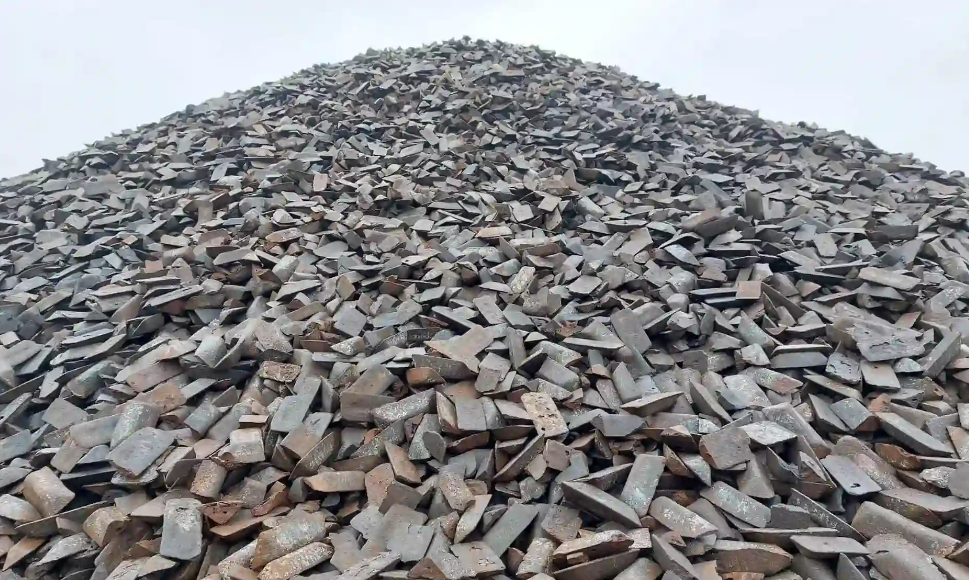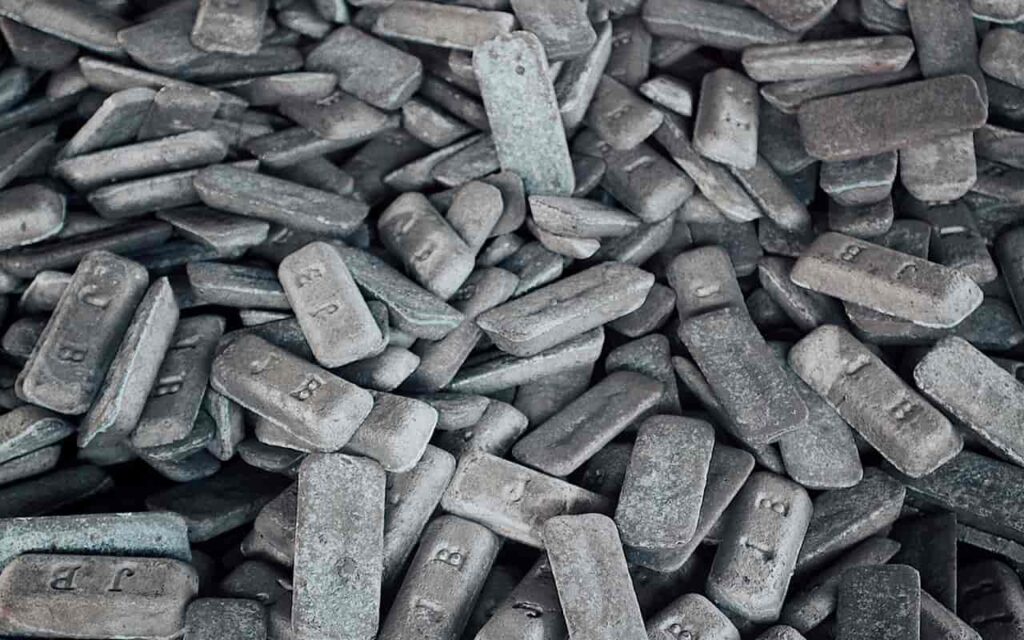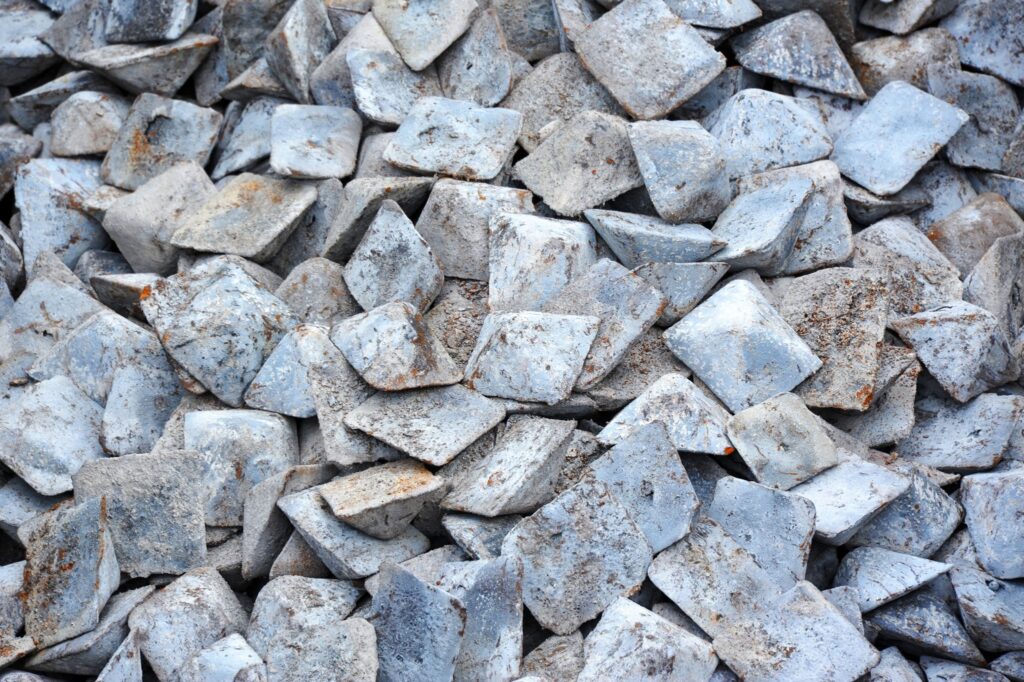Table of Contents
Pig iron is a type of iron that is produced in a blast furnace from iron ore, coke, and limestone. It’s the first stage in the production of steel. Although pig iron is too impure to be used directly for most applications, it plays a crucial role in the creation of various types of steel products. This raw form of iron contains higher amounts of carbon and other impurities, which makes it hard and brittle. However, it’s an important starting point for making higher-quality steel.
The process of making pig iron is fascinating because it combines heat and chemical reactions to separate iron from other elements. Once produced, pig iron can be further refined to create steel. The iron and carbon mixture, called “pig iron,” is poured into molds in the shape of blocks, which resemble a pig’s snout—hence the name “pig iron.” While pig iron itself is not directly useful in manufacturing products, it’s the starting material that drives the steel-making industry.
What is Pig Iron? A Simple Introduction to Its Role in Steel Production
Pig iron is a type of iron that is created in large furnaces using iron ore, coke, and limestone. It is the first step in the production of steel, which is one of the most used materials in the world. Pig iron itself is not ready for use in products because it contains too much carbon and other impurities. Instead, it serves as the starting material for creating steel and other alloys.
When iron ore is melted in a furnace, it separates into different layers. The heaviest parts form the pig iron, which is then shaped into blocks that resemble the shape of a pig’s snout. These blocks are called “pigs,” which is why it’s known as pig iron. This material has high carbon content, which makes it hard and brittle, but it’s an important raw material for the steel-making process.
How Pig Iron is Made: The Step-by-Step Process Explained
The process of making pig iron starts with iron ore, which is a type of rock containing iron. This ore is placed in a blast furnace, a huge oven that gets very hot. When heat is applied, the iron ore melts and turns into a liquid. At the same time, a fuel called coke is added to provide energy, while limestone helps remove impurities.
Once the materials inside the blast furnace melt, they separate into different layers. The heaviest part, pig iron, floats on top of a layer of slag, which is a mixture of impurities like dirt and minerals. This pig iron is collected and cooled to form solid blocks. These blocks are later used in steel-making or other industrial processes.
The Importance of Pig Iron in Creating Steel and Other Metals

Pig iron may not be directly used in products, but it is a crucial step in the production of steel. Steel is made by removing some of the carbon from pig iron and adding other elements like manganese or chromium. This creates a material that is much stronger and more flexible than pig iron.
In addition to steel, pig iron is also used in the creation of other alloys, which are metals made by combining two or more elements. These alloys are used in various industries, including automotive, construction, and even electronics. Without pig iron, these essential materials wouldn’t exist.
Why Pig Iron Has High Carbon and Impurities: A Look at Its Characteristics
Pig iron contains a lot of carbon, which makes it hard and brittle. This is because it is made in a blast furnace, where the process involves melting iron ore along with coke and limestone. The carbon from coke mixes with the iron, resulting in pig iron’s high carbon content. While this makes pig iron unsuitable for most applications, it is a necessary step in making steel.
In addition to carbon, pig iron also contains other impurities such as silicon, sulfur, and phosphorus. These impurities need to be removed before the pig iron can be used to make steel. This is done in a process called refining, where these unwanted elements are removed to create higher-quality metals for industrial use.
How Pig Iron Is Refined to Make Steel: Understanding the Conversion Process
After pig iron is produced, it needs to be refined to create steel. The most common way to refine pig iron is by using a process called the Bessemer process. During this process, air is blown through the pig iron to burn off excess carbon and other impurities.
This makes the iron less brittle and more flexible, turning it into steel. Depending on what the steel will be used for, other elements like manganese, nickel, or chromium are added. This gives the steel specific qualities, such as strength, rust resistance, or the ability to withstand high temperatures. Refining pig iron into steel is crucial for creating materials used in everything from buildings to cars.
Pig Iron vs. Steel: What’s the Difference and Why Does It Matter?
Pig iron and steel are both made from iron, but they have different properties. Pig iron is the raw material that comes directly from the blast furnace. It has a high carbon content, making it hard and brittle. In contrast, steel is made by removing some of the carbon from pig iron, making it more flexible and stronger.
Steel is also more versatile than pig iron. It can be used to make a wide range of products, from buildings to tools. Because of its flexibility and strength, steel is a much more valuable material than pig iron. Understanding the difference between the two is essential for industries that rely on metal production.
The Environmental Impact of Pig Iron Production: Is It Sustainable?
The production of pig iron can have a significant environmental impact. The process uses large amounts of energy and emits greenhouse gases, including carbon dioxide. These emissions contribute to climate change, making it a challenge for the iron industry to be more sustainable.
- Energy consumption: Pig iron production requires a lot of energy, which can lead to high levels of carbon emissions.
- Pollution: The burning of coke and other materials can release harmful gases into the air.
- Recycling: Some industries are working on ways to recycle and reuse pig iron, which could help reduce the environmental impact.
Efforts are being made to make pig iron production more eco-friendly by using cleaner energy sources and improving recycling methods. However, there is still work to be done to ensure the industry becomes more sustainable.
Pig Iron in Today’s World: Why This Old-School Material Is Still Crucial

Even though pig iron is a very old method of metal production, it remains essential today. Many industries still rely on pig iron as the first step in producing steel and other metals. In fact, pig iron is the foundation of modern industrial production.
Without pig iron, there would be no steel to build skyscrapers, cars, or machinery. While technology has advanced, the basic process of making pig iron has stayed largely the same. This shows how important pig iron still is in today’s world.
Conclusion:
Pig iron plays a vital role in the steel-making process. Even though it isn’t used directly for most products, it is the foundation of steel and other metal alloys. By starting with pig iron, industries can produce stronger and more flexible materials needed in everyday life. Without it, we wouldn’t have the steel that builds buildings, cars, and so much more.
While pig iron itself may seem like an old method of production, it is still very important today. Its use in creating steel and other metals ensures that industries around the world can continue to grow and produce essential products. As technology advances, efforts are being made to make pig iron production more eco-friendly, which will help it remain a key part of metal production for years to come.
FAQs
Q: What is pig iron?
A: Pig iron is a type of iron made in a blast furnace from iron ore, coke, and limestone. It is the first step in creating steel but is too impure to be used directly in most products.
Q: How is pig iron made?
A: Pig iron is made by melting iron ore in a blast furnace, along with coke and limestone. The molten iron then forms pig iron, which is collected in blocks.
Q: Why is pig iron important?
A: Pig iron is important because it is the raw material used to create steel. Steel is used to make many products, such as buildings, cars, and tools.
Q: Can pig iron be used directly in products?
A: No, pig iron is too brittle and contains too many impurities to be used directly. It must be refined to make steel or other alloys.
Q: What are the main impurities in pig iron?
A: The main impurities in pig iron are carbon, silicon, sulfur, and phosphorus. These need to be removed during the refining process to create steel.
